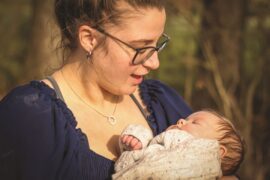“In children, we think slower epigenetic aging could reflect less favorable developmental progress,” said Michael Kobor, a Professor in the Department of Medical Genetics
The extent of methylation, and where on the DNA it specifically happens, can be influenced by external conditions, especially in childhood. These epigenetic patterns also change in predictable ways as we age.
Scientists found consistent methylation differences between high-contact and low-contact children at five specific DNA sites. Two of these sites fall within genes: one plays a role in the immune system, and the other is involved in metabolism. However, the downstream effects of these epigenetic changes on child development and health aren’t known yet.
The children who experienced higher distress and received relatively little contact had an “epigenetic age” that was lower than would be expected, given their actual age. A discrepancy between epigenetic age and chronological age has been linked to poor health in some recent studies.
“We plan to follow up on whether the ‘biological immaturity’ we saw in these children carries broad implications for their health, especially their psychological development,” says lead author Sarah Moore, a postdoctoral fellow. “If further research confirms this initial finding, it will underscore the importance of providing physical contact, especially for distressed infants.”
This article was originally published HERE.










